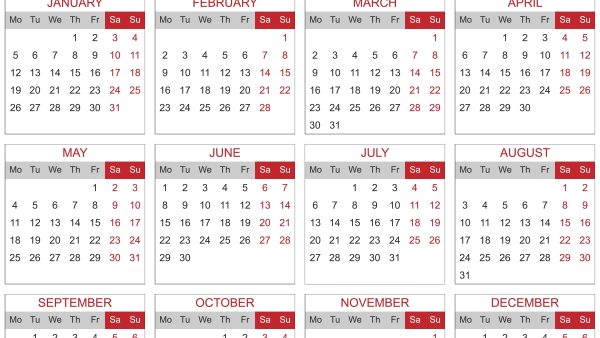Looking for Expert-Level VA Claim Answers?📱Call Us Now! 737-295-2226
Combat Related Special Compensation (CRSC) provides a critical financial benefit to retired military veterans with combat-related disabilities by offering additional tax-free payments.
CRSC is designed to compensate veterans for their “combat-related” disabilities without reducing their military retirement pay due to VA disability compensation, allowing them to receive both benefits simultaneously.
To receive CRSC benefits, you must apply through your specific branch of the uniformed services; your branch will then coordinate with the Defense Finance and Accounting Service (DFAS) to process your claim and determine the appropriate payments.
In this step-by-step guide, we’ll outline the CRSC eligibility criteria, required documentation, and the application process, including key points of contact to help you navigate the system with confidence.
Let’s go!
Table of Contents
Summary of Key Points
- Combat-Related Special Compensation (CRSC) provides tax-free payments to retired military veterans with combat-related disabilities, helping to offset reductions in military retirement pay caused by receiving VA disability benefits.
- Eligibility for CRSC requires applying through your specific branch of the uniformed services, which will then coordinate with the Defense Finance and Accounting Service (DFAS) to process your claim and determine appropriate payments.
- CRSC eligibility criteria include having a military retirement status, one or more combat-related disabilities, and experiencing a reduction in retirement pay due to VA disability compensation. Additional evidence and documentation are necessary to support your claim.
- The CRSC application process involves submitting the required forms and documentation to your service branch, being aware of the six-year statute of limitations for back pay, and understanding the differences between CRSC and Concurrent Retirement and Disability Pay (CRDP).
Basic Eligibility for Combat Related Special Compensation (CRSC)
To qualify for Combat Related Special Compensation (CRSC), you need to meet the following eligibility criteria:
#1. Military Retirement Status:
You must be a retired service member entitled to or receiving military retirement pay. This includes regular military retirement with 20 years of service or more as well as medically retired service members with less than 20 years of service.
#2. One or More Combat-Related Disabilities:
You must have a VA disability rating of at least 10% that is considered “combat-related.” Your VA decision letter and VA rating code sheet will explain which service-connected VA disabilities were due to combat service.
#3. Retirement Pay Reduction:
Your DoD retirement payments are currently reduced by the amount of your VA disability payments. However, if your VA disability rating is 50% or higher, you may qualify for Concurrent Retirement and Disability Pay (CRDP), which lets you receive both full military retirement pay and VA disability compensation without any offset. Note: CRDP is separate from Combat-Related Special Compensation (CRSC), and you must choose between the two, as you cannot receive both simultaneously.
CRSC Military Retirement Eligibility
At least one of the following must be true for you to meet the retirement eligibility requirement for CRSC:
- You completed 20 or more years of service in the military, National Guard, or Reserve.
- You retired for medical reasons with a disability rating of at least 30% under Chapter 61.
- You’re covered under the Temporary Early Retirement Act (TERA).
- You’re on the Temporary or Permanent Disability Retired List (TDRL or PDRL).
Required Evidence and Documentation
To prove your eligibility for CRSC, you need to submit evidence that your disability is “combat-related.”
This includes documents such as:
- Service Medical Records: These should be from the time of the injury, clearly showing the severity of your condition and its combat-related nature. Be selective—only submit records relevant to your claim.
- Official Service Records: Include documents such as After Action Reports, Investigative Reports, personnel action requests (e.g., DA 4187), and performance evaluations like NCOERs and OERs that provide context and confirmation of the combat-related incident.
- Decorations and Award Recommendations: These could be Purple Heart citations, Combat Action Badges, medals, or any awards that recognize valor or combat actions.
- Additional Documents: Retirement records (e.g., retirement orders, Armed Forces of the United States Report of Transfer), your VA decision letter, and your DD214 should also be included to further substantiate your claim.
What Your Evidence Must Show
Your evidence needs to clearly demonstrate that your injury or condition occurred during one of the following:
- Engaged in armed conflict (this can include direct and indirect armed conflict).
- Participating in hazardous duties like demolition, parachuting, or flying.
- Involved in war simulation activities, such as live-fire exercises.
- Exposed to instruments of war, like military vehicles or weapons.
- Engaged in activities for which you received a Purple Heart.
Pro Tip: Your VA Rating Code Sheet is a letter that explains your individual VA disability ratings by Diagnostic Code (DC), service connection status, and which conditions were due to “combat related” military service.
How to Apply for CRSC
To apply for CRSC, follow these steps:
- Complete the DD Form 2860: This is the application form for CRSC. Download it to your device and complete it using Adobe Acrobat or Adobe Acrobat Reader.
- Submit Your Application: Send your completed application and all supporting documents to your uniformed service below. Only submit copies, as original documents will not be returned. Make sure to keep a copy of your application for your records.
Where Do I Submit My CRSC Application?
Each branch of the military has specific mailing addresses, emails, and online or email application portals for CRSC applications:
| Service Branch | Contact Information |
|---|---|
| United States Air Force and United States Space Force | United States Air Force Disability Division (CRSC) HQ AFPC/DPPDC 550 C Street West Randolph AFB, TX 78150-4708 Submit CRSC Application/Claim Note: If you are unable to access the link, please search by the knowledge article: 000002298 |
| United States Army | Department of the Army U.S. Army Human Resources Command Attn: AHRC-PDP-C (CRSC) 1600 Spearhead Division Avenue, Dept. 480 Fort Knox, KY 40122-5408 Or send your application by email to: [email protected] You can also use eFAX: 502-613-9550 |
| United States Coast Guard | Commander (PSC-PSD-MED) Personnel Service Center, Attn: CRSC 2703 Martin Luther King Jr. Avenue SE Washington, DC 20593-7200 Email: [email protected] |
| United States Navy and United States Marine Corps | Secretary of the Navy Council of Review Boards Attn: Combat Related Special Compensation Branch 720 Kennon Street SE, Suite 309 Washington Navy Yard, DC 20374-5023 Phone number: 877-366-2772 Email: [email protected] |
Understanding the CRSC Application Timeline for Back Pay
When applying for Combat-Related Special Compensation (CRSC), it’s crucial to be aware of the six-year statute of limitations. This means you need to file your CRSC claim within six years of your VA rating decision or the date you became entitled to retired pay, whichever comes first. Filing within this period ensures you receive the full amount of any back payments (retroactive payments) you may be owed. If your claim is filed after this six-year window, you may only receive up to six years’ worth of back payments, potentially leaving some benefits unclaimed.
Can I Receive CRSC Retroactive Payments?
Yes, if you qualify for CRSC, you may be eligible for retroactive payments for the period before you began receiving benefits. The Defense Finance and Accounting Service (DFAS) will review your pay records from both DFAS and the VA to determine if retroactive payments are due. Payments could date back as far as June 1, 2003, depending on factors like when your CRSC began, your retirement date, and eligibility for benefits like the Purple Heart. Retroactive payments are capped at six years from the VA’s compensation award date. For disability retirees with less than 20 years of service, payments can only go back to January 1, 2008.
What Happens If I Fail to Apply for CRSC Within the Statute of Limitations?
If you miss the six-year deadline, you may still receive CRSC payments moving forward, but retroactive payments will be limited to a maximum of six years from the date of your application or the date the VA awarded compensation for your disability.
How Does CRSC Differ from CRDP?
CRSC compensates for combat-related disabilities and is tax-free, while CRDP allows veterans with a VA disability rating of 50% or higher to receive both full military retirement pay and VA disability compensation, without any offset. However, CRDP is taxable, and veterans must choose between CRSC and CRDP, as they cannot receive both simultaneously.
Can I Receive Both CRSC and Concurrent Retirement and Disability Pay (CRDP)?
No, you cannot receive both CRSC and CRDP simultaneously. You must choose between the two, generally selecting the one that provides the greater financial benefit.
What Types of Disabilities Are Considered Combat-Related for CRSC?
Combat-related disabilities include those incurred in direct or indirect combat, during hazardous duties (e.g., parachuting, demolitions), during war simulations (e.g., live-fire exercises), or as a result of instruments of war. Disabilities for which you received a Purple Heart are also considered combat-related.
Can I Request a Reconsideration of My CRSC Application?
If your CRSC application is denied, or if there have been changes to your disability rating that could affect your eligibility, you have the right to request a reconsideration from your service branch. You might consider asking for reconsideration if:
- Your CRSC application was initially denied.
- You have received a new disability rating for a combat-related condition or injury.
- There has been a change in the disability rating associated with your existing CRSC.
How Long Does It Take to Process a CRSC Claim?
Processing times for CRSC claims vary based on factors like your service branch, the complexity of your claim, and the current workload at DFAS. Generally, each service branch aims to process CRSC claims within 120 calendar days. However, this timeline can extend if additional information is needed or if there is a backlog of claims. Additionally, the time required for DFAS coordination and processing is not included in this estimate. Some veterans have reported waiting a year or more for their CRSC claims to be fully processed.
Is CRSC Pay Taxable?
CRSC payments are entirely tax-free. This means you will receive the full amount without any deductions for federal taxes, providing a significant financial benefit.
About the Author

Brian Reese
Brian Reese is a world-renowned VA disability benefits expert and the #1 bestselling author of VA Claim Secrets and You Deserve It. Motivated by his own frustration with the VA claim process, Brian founded VA Claims Insider to help disabled veterans secure their VA disability compensation faster, regardless of their past struggles with the VA. Since 2013, he has positively impacted the lives of over 10 million military, veterans, and their families.
A former active-duty Air Force officer, Brian has extensive experience leading diverse teams in challenging international environments, including a combat tour in Afghanistan in 2011 supporting Operation ENDURING FREEDOM.
Brian is a Distinguished Graduate of Management from the United States Air Force Academy and earned his MBA from Oklahoma State University’s Spears School of Business, where he was a National Honor Scholar, ranking in the top 1% of his class.




